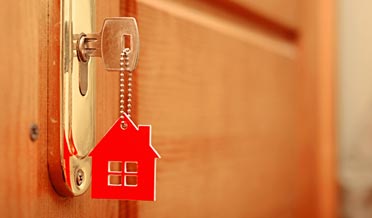Plumbing Repairs Checklist Before You Buy Your Next Home
Nothing is quite as exciting as purchasing a home:
- First, there is the search
- Second, the negotiation
- Third, the tedium of the closing
- Fourth, getting the keys
There is a short period during the negotiation period that requires careful attention—reading the inspection report very closely. Read over the descriptions of existing plumbing, including existing plumbing material for both supply and drainpipes. Also, notice any Plumbing Repairs that might be listed.
- Pipe material provides hints of the age of the home and the quality of building materials since some materials are brittle or subject to corrosion. Materials are not necessarily an indication of present trouble but will become very important should repairs become necessary.
- Pay attention to the report concerning the water heater, since it has a limited useful life. Anticipate replacing a water heater that is more than 10 years old. The manufacturing year can be located on the model number plaque.
- Faucet leaks are not uncommon. Often the mineral content of the water damages seals and O-rings, allowing minor drips to sneak past the seal. Faucet leaks can often be repaired and if not, the faucet can be replaced.
- Low water pressure may indicate a leak in the water supply, a problem with the water heater, or foreign material clogging the water line. Since water is under pressure, the leak will result in significant water and might even be heard.
- High pressure with the hot water supply may result from unregulated heat in the water heater. High pressure in the entire system may result from the supply coming from the water utility; a regulator may be required to control the pressure. Persistent high-water pressure will damage appliances that use water—water heaters, dishwashers, and washing machines
- The mention of a loose toilet, a rocking toilet, or water leaking from a toilet is potential trouble. Toilet leaks often go undetected for years and the damage to floors and floor joists can be extensive. Investigate the floors in the immediate vicinity and the ceiling of rooms under the leaking toilet.
- Leaks around sinks, showers, and tubs may also exist for a long period without detection. Keep in mind that leaks can occur on the supply or the drain; observe spaces, including the ceiling below sinks and tubs.
- Another indication of trouble is a slow drain or gurgling drain, or terrible smells coming from the drain. Soap, oils, and food particles can be cemented to the sides of the drain, restricting the flow of wastewater. The solution depends upon the extent of the problem and may require the assistance of a plumber.
- Damage to the main sewer line may require significant repairs. Watch for notes concerning standing water in the yard or unusually “green” grass along the path of the sewer line. The sewer line is buried, often as much as ten feet below the surface. Buried sewer lines can be damaged by movement—often due to construction. It can also be damaged by the pressure of roots from nearby trees or shrubs. Any flaw that allows water to leak will attract these roots. Living roots create extraordinary pressure; not only will they widen the flaw, but they will also fill the drain line, absorbing the nutrient-rich water and clogging the pipe.
Discovering plumbing repairs before the purchase of a home can help avoid the purchase of a home with severe plumbing repairs and ensure repairs are made before your family occupies the home.
Buying a home? Check for these Plumbing Repairs first!
Let Doctor Cool help with Plumbing Repairs questions before buying your home. Call Doctor Cool & Professor Heat today at 281-338-8751 or email Doctor Cool and let our professional Residential Plumber Contractors assist with all of your Drain Cleaning questions.
